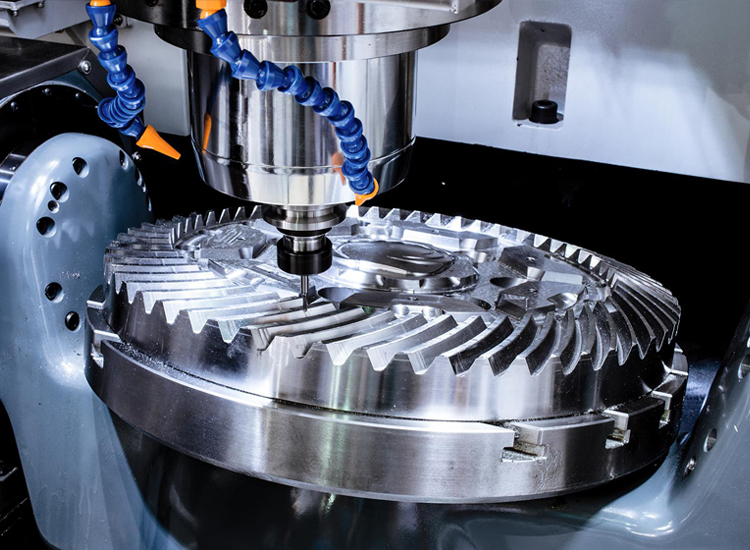Stainless Steel Precision Casting Technology And Research
- Categories:News
- Author:
- Source:
- Time:2021-07-30
- Visits:0
[Summary]In the production of stainless steel products, some products have peculiar shapes and cannot be produced by bending pipe technology. Using wax mold, sand mold and liquid material filling molding process, products with irregular shapes (hollow or solid) are produced.
Stainless Steel Precision Casting Technology And Research
[Summary]In the production of stainless steel products, some products have peculiar shapes and cannot be produced by bending pipe technology. Using wax mold, sand mold and liquid material filling molding process, products with irregular shapes (hollow or solid) are produced.
- Categories:News
- Author:
- Source:
- Time:2021-07-30
- Visits:0
1. What is stainless steel precision casting
In the production of stainless steel products, some products have peculiar shapes and cannot be produced by bending pipe technology. Using wax mold, sand mold and liquid material filling molding process, products with irregular shapes (hollow or solid) are produced.
Advantages: different products can be made according to different wax types
Disadvantages: The blank forming accuracy is not high, and the surface roughness is large.
2. Precision casting process
1. Make molds according to different shapes of products. The mold is divided into upper and lower molds, and the upper and lower molds are completed through comprehensive processes such as turning, planing, milling, etching, and EDM. The shape and size of the pit are the same as half of the product. Since wax molds are mainly used for industrial wax mold molding, aluminum alloys with low melting point, low hardness, low requirements, low price, and light weight are used as molds.
2. Using aluminum alloy molds to produce a large number of industrial wax solid core models. Under normal circumstances, the solid wax model can only correspond to blank products.
3. In order to refine the edge of the wax mold, after deburring, stick several single wax molds on the pre-prepared mold (also called group tree). The mold is also an industrial wax solid core mold produced by wax molds. (It looks like a tree)
4. Apply industrial glue to several wax molds fixed on the die, and evenly spray a layer of fine sand (a kind of refractory sand, high temperature resistant, usually silica sand). The fine sand particles can ensure that the surface of the final blank is as smooth as possible.
5. The wax mold sprayed with a layer of fine sand is naturally air-dried at the set room temperature (or constant temperature), but the shape of the internal wax mold will not be affected. The natural air-drying time depends on the complexity of the product itself. The air-drying time of precision castings is generally about 5-8 hours.
6. After a sandblasting and natural air drying, continue to use industrial glue (silicon paste) on the surface of the wax mold and spray the second layer of sand. The particle size of the second layer of sand is larger and thicker than that of the first layer of sand. After the second layer of sand is sprayed, the wax mold is also air-dried naturally at the set constant temperature.
7. After the second sand blasting is air-dried naturally, perform the third, fourth, and fifth sand blasting in sequence. Requirements:-Adjust the number of sandblasting according to product surface requirements, volume, and weight. Under normal circumstances, the number of sandblasting is 3-7 times. -The size of the sand grains changes over time. Normally, the sand grains in the later stage are thicker than the sand grains in the previous process, and the air-drying time is different. Under normal circumstances, the complete production cycle of wax mold sand is about 3 to 4 days.
8. Apply white industrial latex (silicone oil slurry) to the wax mold that has completed the sandblasting process before drying, bond and solidify the sand mold, seal the wax mold, and prepare for later drying. At the same time, after the roasting process, the brittleness of the sand mold can be improved, the sand layer can be easily broken, and the blank can be removed.
9. The wax mold is fixed on the die during the baking process to complete the sandblasting and air-drying process, and it is heated in a metal-sealed special oven (usually a kerosene-burning steam oven). Because the melting point of industrial wax is not high, the temperature is about 150 ℃, the wax mold is heated and melted, and the wax water flows out along the gate for dewaxing. The wax model after dewaxing is just an empty sand shell. The key to precision casting is to use this empty sand shell. Generally speaking, this wax can be reused, but these waxes must be re-filtered. Otherwise, the dirty wax will affect the surface quality of the blank, such as sand holes and pits on the surface, and the shrinkage rate of investment casting products.
10. In order to make the dewaxed sand shell stronger and more stable, the sand shell must be baked before pouring stainless steel water, usually in a high temperature (about 1000) furnace.
11. After dewaxing, pour the stainless steel melted into liquid at high temperature into the sand shell. Liquid stainless steel water fills the space of the original wax mold until it is completely filled, including the middle part of the die.
12. Due to the mixing of different components in the water-soluble stainless steel boiler, the factory must test the percentage of materials. Then, explain according to the required proportion, such as adding these elements to achieve the desired effect.
13. After the liquid stainless steel is cooled and solidified by water, crush the outermost sand shell with mechanical tools or manually. The solid stainless steel product is the shape of the original wax mold, which is the final blank required. Then cut, separate and roughen them one by one to form a blank.
14. Check the blank: The blanks with sand holes and pores on the surface must be repaired by argon arc welding. Seriously, the garbage should be reheated after cleaning.
15. Cleaning blanks: qualified blanks must go through the cleaning process.
16. Processing other processes until the finished product.
Scan the QR code to read on your phone
CONTACT US
SCAN QR CODE

Scan And Follow Us
MESSAGE
© 2021金年会中国金年会登录 All Rights Reserved 豫ICP备2020034136号-1
- Contact Us
- whatsapp 0373-2163365
- Hotline 0373-2163365
- Email xxzhenxin@126.com
- Back To Top




